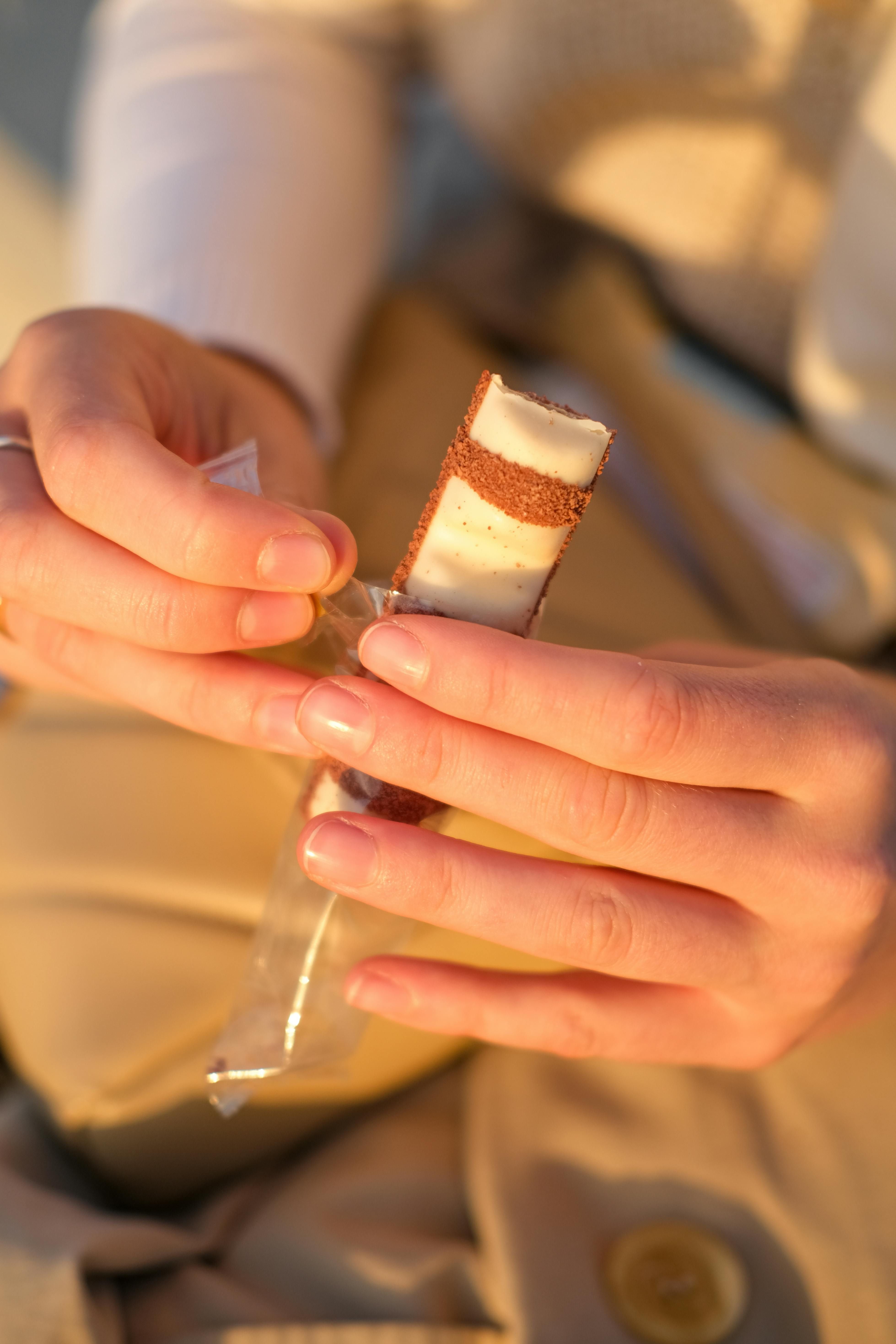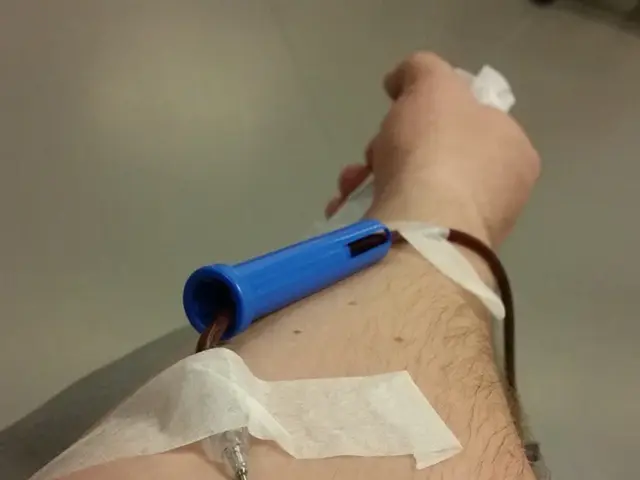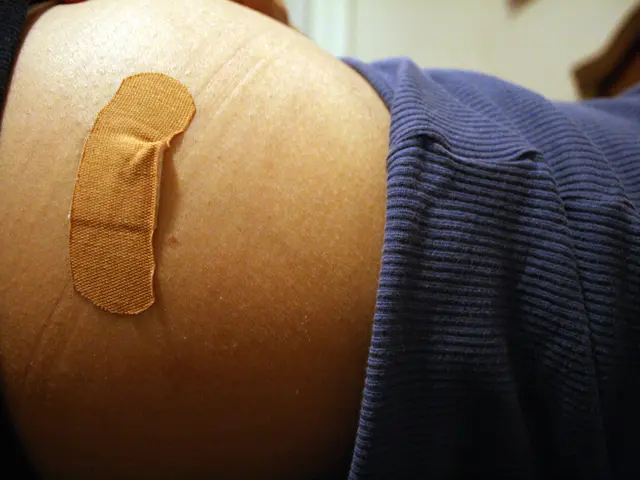Unveiling the Secrets: A Guide to Dermaplaning Facial Treatments
This Is All About Dermaplaning, But Not Your Average Skin Treatment Advice
Ever wondered what's the buzz about that popular skin treatment on TikTok? We're talking about dermaplaning, of course! But unlike other trendy treatments (like DIY injectables), this one might just be legit. Here's a deep dive into the benefits, risks, and what you can expect from a dermaplaning session.
What In The World Is Dermaplaning?
Dermaplaning, or "blading" or "microplaning," is a cosmetic skin treatment that scrapes off the top layer of your skin using a sharp blade. It helps in shedding dead skin cells, debris, and peach fuzz from your face, all while promoting a glow and smooth texture.
How Does It Work?
Dermaplaning resembles shaving but goes a step further by removing the very top layer of your skin. Your skin naturally undergoes a renewal process, but dermaplaning speeds things up. A professional, equipped with a sterile blade or razor, will gently scrape it across your skin at a 45-degree angle, removing unwanted hair, dead skin, and debris to reveal a cleaner, newer layer of skin.
Benefits of Dermaplaning
The benefits of dermaplaning vary from person to person, but potential perks include:
- Removing tiny hairs for a smooth, even texture
- Reducing the appearance of fine lines and wrinkles
- Providing a glow
- Reducing the appearance of acne scars or sun damage
Please note that although it seems effective, there's no concrete research yet to prove it's a miracle worker.
Ready, Set, Glow
So you're ready to get that glow on? Let's break down what to expect before, during, and after a dermaplaning session.
Prepping for Your Session
Chit-chat with your provider before your dermaplaning treatment. Discuss your skin type, medical history, and desired results. They'll make sure that dermaplaning is the right service for you and might recommend you reschedule if you have an acne flare-up or sunburn. You'll likely be asked to come makeup-free to the appointment.
The Session
First, your provider will thoroughly cleanse your face. Then they'll commence the dermaplaning process, which you may feel as a light, tingling sensation. Although the treatment is painless, keep an open dialogue with your provider and let them know if you feel any discomfort. They'll finish up with toning and hydrating products.
Recovery
Dermaplaning doesn't require downtime, but your skin might appear red or sensitive for a few days. When this subsides, you'll be able to see the full results. Your provider might advise steering clear of harsh exfoliants until your skin recovers, and sunscreen is a must-have, especially for avoiding hyperpigmentation (aka dark spots).
Potential Drawbacks
Though safe when done by a pro, dermaplaning may result in side effects like redness, acne flare-ups, small cuts or nicks, or increased sensitivity. Rare cases may involve infections or scarring.
Cost
Dermaplaning prices depend on the provider and additional services, such as chemical peels. In general, you'll spend between $100 and $250 for a 30-minute session. Some providers may offer bundle deals or local coupons, so be sure to ask!
Suitable for All Skin Types
Dermaplaning can benefit all skin types: oily, dry, or combination. However, it's not recommended for those dealing with an acne breakout or recovering from a sunburn.
Setting Your Expectations
While dermaplaning can certainly help you get closer to your skin goals, a single session is not a long-term solution. You may need treatments every 4 to 6 weeks to maintain the best results.
Finding a Pro
Many beauty salons and medical spas offer dermaplaning facials, but not all are top-notch. Consult your dermatologist for their professional opinion, and they can refer you to someone who does dermaplaning if they don't offer it in-house.
Alternatively, check out the American Society of Plastic Surgeons' website for a provider in your area.
Is DIY Dermaplaning Advisable?
You should only have a licensed esthetician, dermatologist, or plastic surgeon perform a dermaplaning treatment. Attempting it at home can lead to cuts, scratches, and irritation, not to mention subpar results.
Alternatives to Dermaplaning
Have second thoughts about a treatment involving a sharp object? Meet dermaplaning's bladeless cousin: microdermabrasion. Instead of using a scalpel, your provider employs a rough surface to gently exfoliate. It can help reduce the appearance of:
- Melasma
- Age spots
- Acne scars
- Dark spots and uneven skin tone
Most microdermabrasion treatments last around 30 to 40 minutes and cost between $50 and $200. Microdermabrasion may not remove facial hair or enhance product absorption as much as dermaplaning, but it's generally safer and more cost-effective.
The Final Word
Dermaplaning involves a fine blade or scalpel to exfoliate your skin, providing smoother texture, minimal fine lines and wrinkles, and a glowing complexion. While dermaplaning is generally considered safe, there are potential side effects to keep in mind. Only get it done by a licensed provider, and tread carefully if you're unsure about the treatment. For a more gentle exfoliation without hair removal, consider microdermabrasion as a less risky option.
[1] WebMD. (2017). Dermaplaning: Is It Safe? WebMD LLC.[2] American Academy of Dermatology Association (AADA). (2018). Skin Exfoliation: Means for Smoother Skin. American Academy ofDermatology Association (AADA).[3] Mayo Foundation for Medical Education and Research (MFMER). (2019). Ultrasonic Microdermabrasion: A Comparison With Other Abrasive Exfoliation Techniques. Mayo Clinic.[4] Journal of Clinical Aesthetic Dermatology. (2013). New Methods for Improved Skin Rejuvenation. American Med-Aesthetics.[5] Aesthetician's Guide. (n.d.). Dermaplaning 101. Aesthetician's Guide.
- Dermaplaning, a method known as "blading" or "microplaning", is a skin treatment that uses a sharp blade to scrape off the top layer of skin, removing dead skin cells, peach fuzz, and debris.
- The potential benefits of dermaplaning may include smoothing out the skin texture, reducing the appearance of fine lines and wrinkles, and improving the glow of the skin.
- Although dermaplaning can be effective, there's no concrete research yet to prove it's a miracle worker for skin care.
- Before a dermaplaning session, discuss your skin type, medical history, and desired results with a provider. They may recommend rescheduling if you have an acne flare-up or sunburn.
- After a dermaplaning session, your skin might appear red or sensitive for a few days and your provider might advise avoiding harsh exfoliants until your skin recovers.
- While dermaplaning can be beneficial for all skin types, it's not recommended for those dealing with an acne breakout or recovering from a sunburn.





